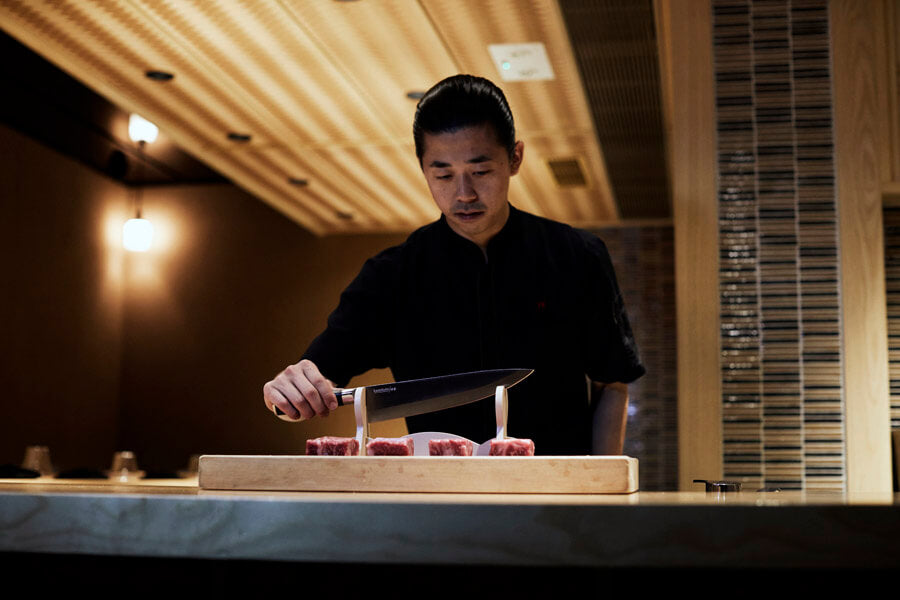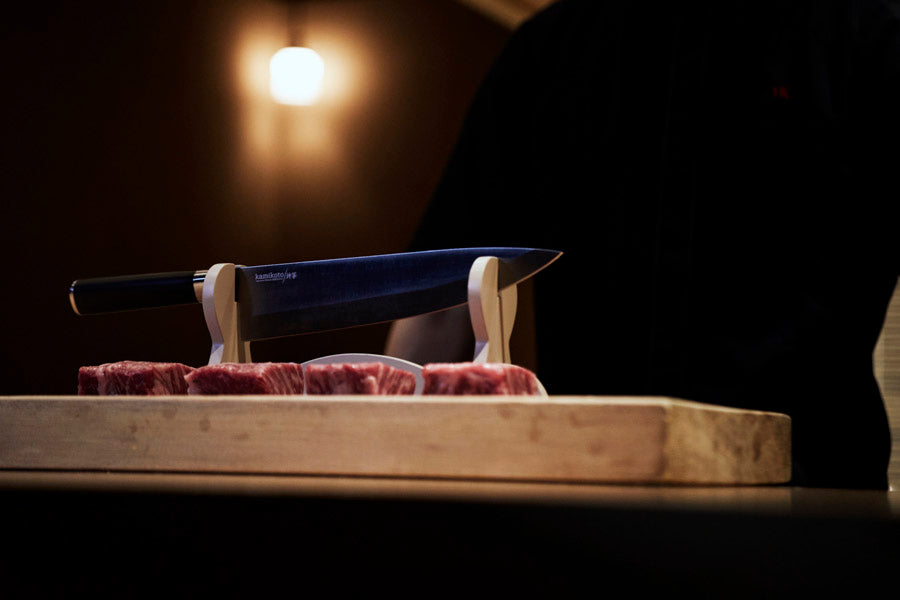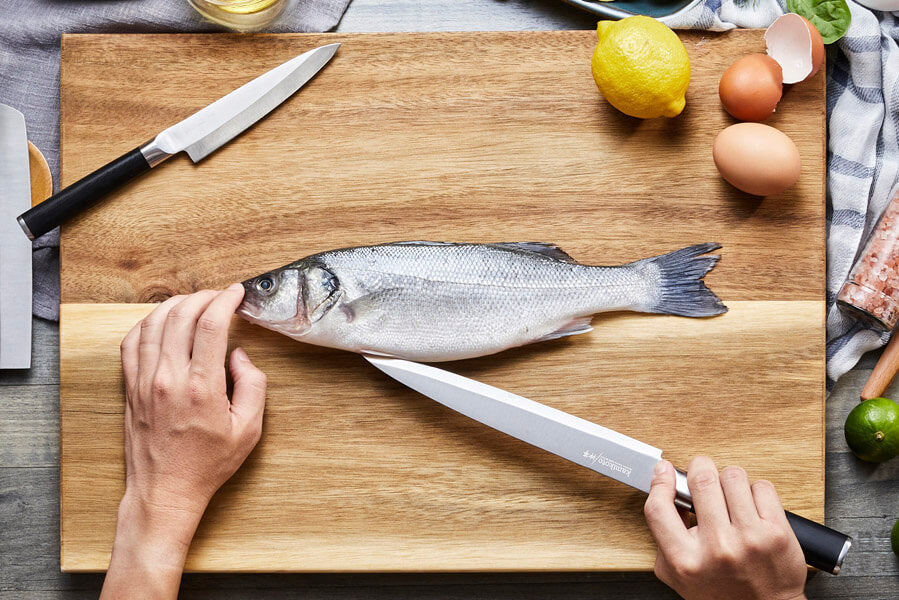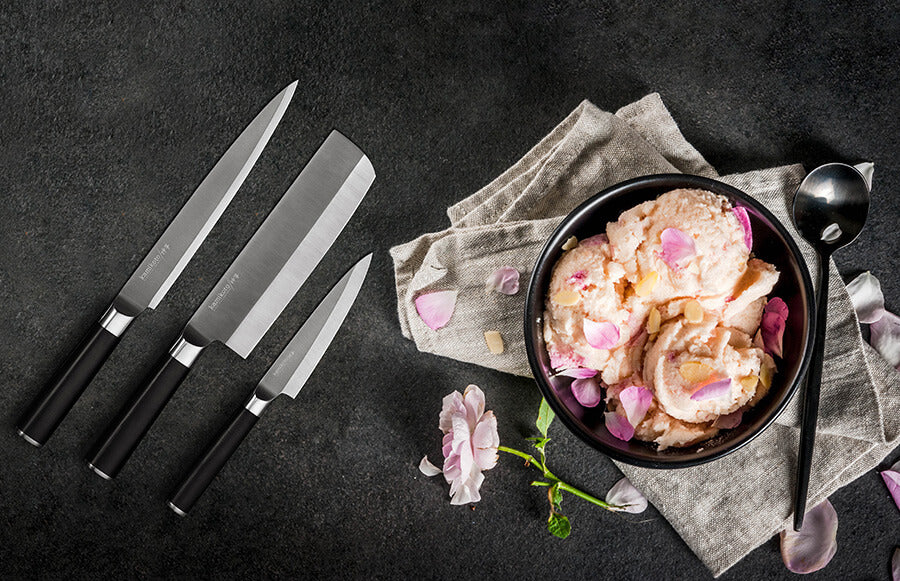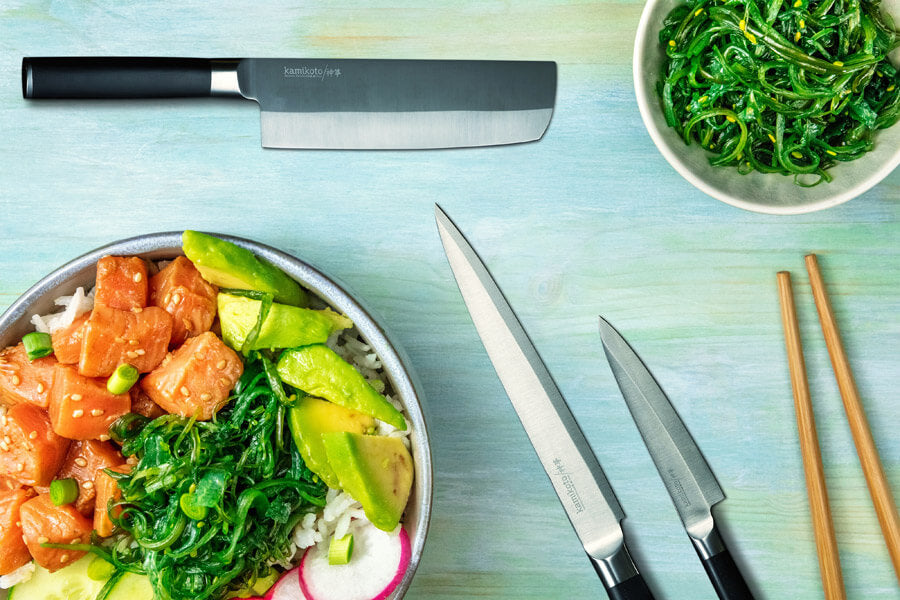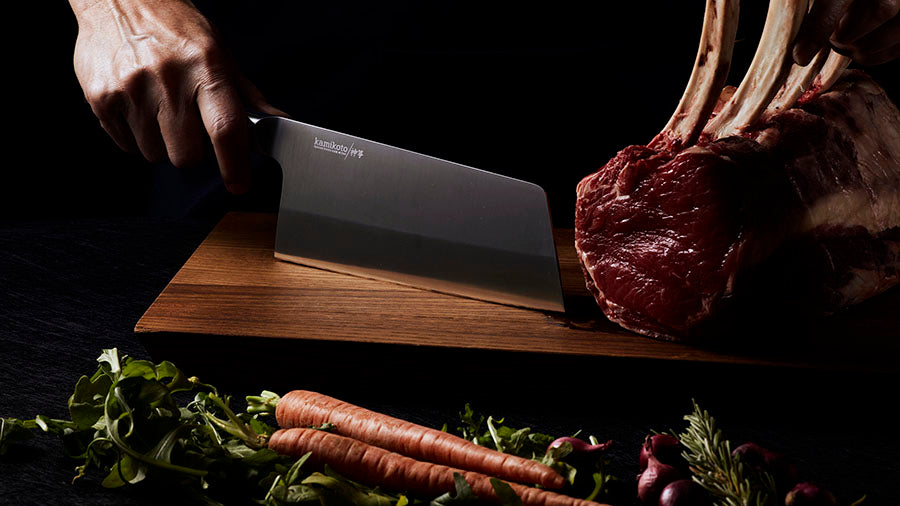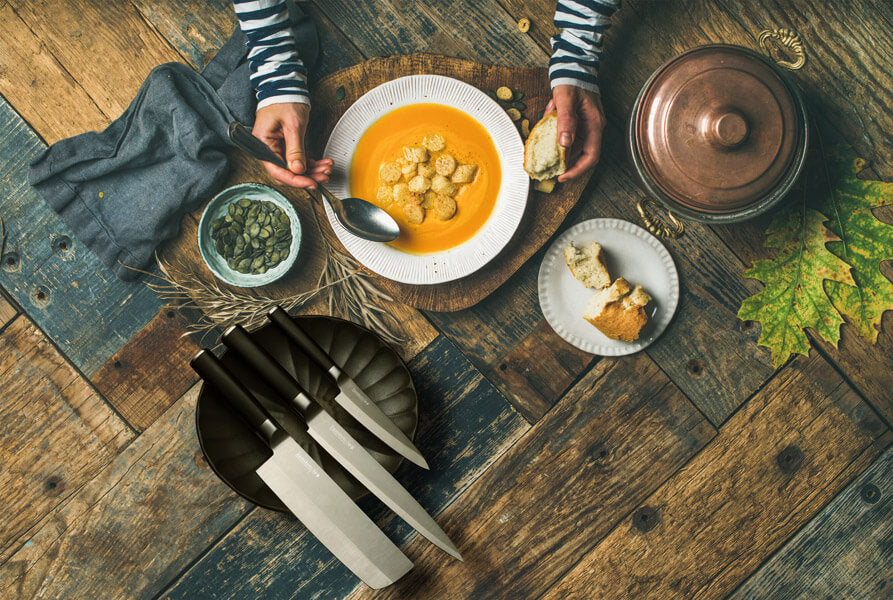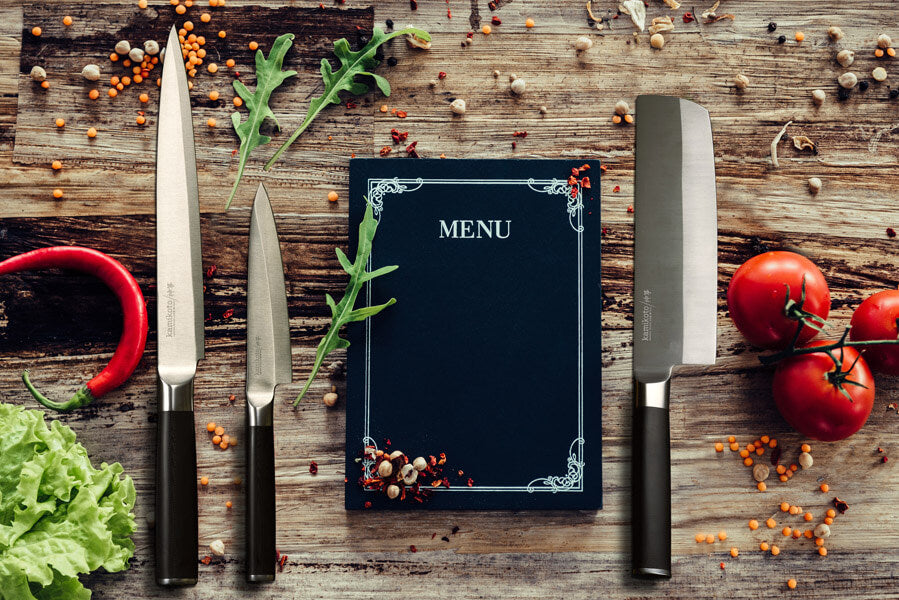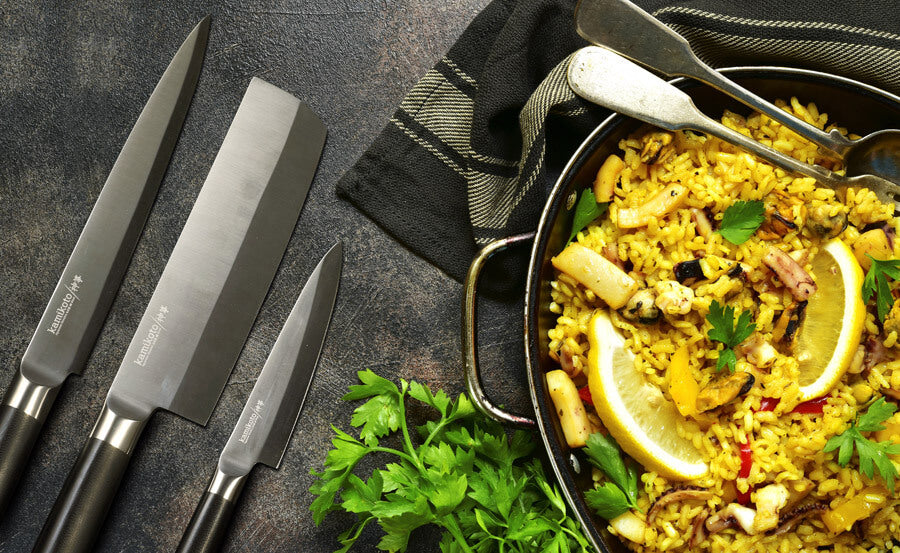Kamikoto Fundamentals | Advice for Chefs
Japanese Chef Knife Techniques
Japanese chefs are renowned for their masterful knife skills. The techniques they employ to create intricate sushi dishes and vegetable garnishes take much time, perseverance and practice to develop.
How to Become a Teppanyaki Chef
Expertise, mastery, showmanship and precision are four words that aptly describe a teppanyaki chef. In addition to possessing all the skills of a gourmet chef, these professionals incorporate the art of performance into their cooking. Learn more about becoming such a master here.
Understanding Single and Double Bevel Knives
Ask any professional chef about the most important feature of their knives and they will most likely say their level of sharpness. Sharp knives allow chefs to make the right cuts to produce beautiful dishes, both in terms of presentation and flavor.
How to Professionally Scale, Gut and Clean Fish
There is an art to fish preparation and it is nowhere more evident than when watching a masterful Japanese chef prepare intricate sushi dishes. Using their fine knife skills to scale, gut, clean and slice fish, it is difficult not to be amazed by their precision and talent. Learn to do it yourself here.
Using Flowers For Presentation in Food
With their natural beauty, vibrancy and taste, flowers have an innate ability to inspire wonder and a feeling of ‘wow’, particularly when they are used in the correct way in food.
Comprehensive Guide to Deboning Meat
Deboning involves using a specialty knife to separate flesh from bones be it meat, poultry or fish. Learning to debone is an advanced culinary skill that takes much practice to perfect, a skill that is vital to develop to take one’s gastronomic prowess to the next level.
Understanding the Flavors of Hawaiian Cuisine
Hawaii’s cuisine is a confluence of flavors in part due to their native inhabitants but also to those who have journeyed to their shores to work and live. Their food encompasses dishes based on traditional Hawaiian fare as well as those with Polynesian, European and Asian roots.
How to Correctly Handle a Cleaver
When it comes pounding, dicing, mincing, crushing and slicing, a chuka bocho is one of the most versatile and important tools in a chef’s arsenal. Read on to find out more about professional cleaver techniques for chefs.
Understanding the Flavors of Scandinavian Cuisine
Scandinavian cuisine encompasses the Nordic nations of Denmark, Sweden, Norway, Finland and Iceland. Some of the cuisine’s roots can be traced back to the Viking age and many still feature on tables today in similar forms.
Understanding the Language of Menus
If you've ever found yourself lost while reading a menu, you're not alone. This article is a guide to navigating the sometimes confusing issue of menus in the western world.
Understanding the Flavors of Maltese Cuisine
For a tiny nation, Malta produces food that is surprisingly rich, robust and rustic. Over many centuries, the Maltese people cannily absorbed and adapted dishes brought over by invaders to create a cuisine that is full of interesting flavor combinations and wholly satisfying.
Understanding the Use of Edible Gold in Food
The use of edible gold in food is a practice stemming back thousands of years to honor gods, boost vitality and also to show off one’s wealth. Today, the practice has evolved somewhat to give diners a chance to experience a touch of decadence, even whilst eating the most every-day of foods.
-
Previous
- Page 1 of 2
- Next



